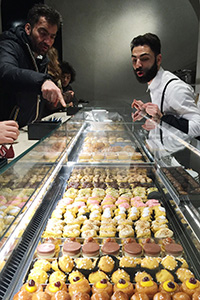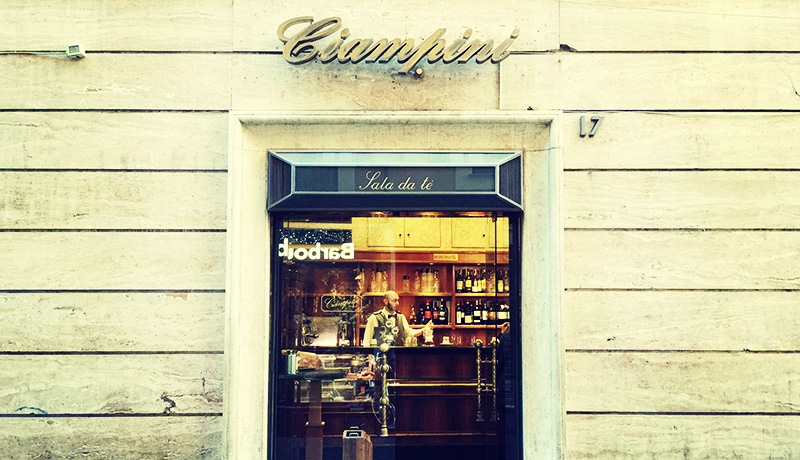

Stop By Ciampini For Prosecco and People Watching
Photo Courtesy of Ciampini
Sip and stand or drink and go — that tends to be the style of caffè culture in Rome. Throughout the day, you’ll find politicians and priests, actors and artists and schoolteachers vying for elbow room at the local bar in a city where there is a coffee shop on every other corner.
And Romans know they are lucky — bars are serviced by experienced baristas and most counters have a lineup of pastries. Truthfully, there is no need to walk more than a few steps for your morning caffeine but here are the spots worth going out of your way:
The Quick Cup
Though definitely the new bar on the block, Roscioli Caffe took over the location of a historic neighborhood bar thanks to the foresight of foodie brothers Pierluigi and Alessandro Roscioli (behind Rome’s four-generations-old bakery Antico Forno Roscioli and modern delicatessen and restaurant Roscioli Salumeria), who wanted the space to be faithful to the local residents of the area.

Roscioli’s Pastries, Photo Courtesy of Roscioli
Modernized with high ceilings and minimalist décor, Roscioli Caffe is all about pastries. Every morning, Roscioli bakers meticulously make delicate mignon pastries — in other words, smaller versions of favorites like granatina and sfogliatella (lobster tails) — and artisanal sandwiches. Though it seems to be standing-room only, there are a few bar seats in the back room, if you can make it through the crowds.
The Sleeper
Caffe Doria’s nondescript entrance hides a turn-of-the-century house with robin’s-egg-blue ceilings, paintings and beautiful ceramic service sets. Located inside the Palazzo Doria Pamphilj, home to one of Rome’s famed noble families, Caffe Doria maintains a certain regal air — with down-to-earth prices for table service.
The Afternooner
In one word, Ciampini is perfect — top-notch service (whether table or bar), a lovely selection of products, traditional style (wood panels, linen tablecloths) and beautiful piazza seating. This is the spot for a long coffee break, though it’s pretty popular with the early morning bar crowd, too.
In the winter months, outdoor seating is just as popular in the summer, with tables crowded with Ciampini’s heavenly hot chocolate. But once the temperatures rise, and we’re talking anything above 45 degrees, Ciampini’s piazza seating is the place to be for afternoon aperitivi: prosecco, Negroni or spritz.
The Atelier
Formerly the atelier for the work of early-19th-century sculptor Antonio Canova, Canova-Tadolini passed on to the artist family Tadolini, who maintained it as a workshop until its mid-20th-century incarnation as both a museum showcasing Canova and Tadolini molds and casts, and coffee shop.
The caffè is quite easily Rome’s most charming, with its peaked wood ceilings, hardwood floors, 19th-century artist’s space and life-sized sculptures. Canova-Tadolini also boasts the largest cappucino in the city. We’re pretty partial to the faux gold flatware as well.
The Original
There are many caffè bars that qualify as historic, but none more so than Antico Caffe Greco, Rome’s oldest caffe as well as one of Europe’s. With an A-list clientele of the 18th- and 19th-century’s top intellectuals like Johann Wolfgang von Goethe and Nikolai Gogol, we understand its attraction. Marble countertops, velvet lounges, formally dressed waiters and Belle Époque décor also help the place exude a sense of Rome of centuries past with table prices that cost a pretty penny.
For a taste of the experience (at a fraction of the cost), be Roman and grab an espresso at the brass bar. We queue up for the granita di caffe con panna, a frozen coffee drink that Greco serves beautifully whether at the bar or table.
